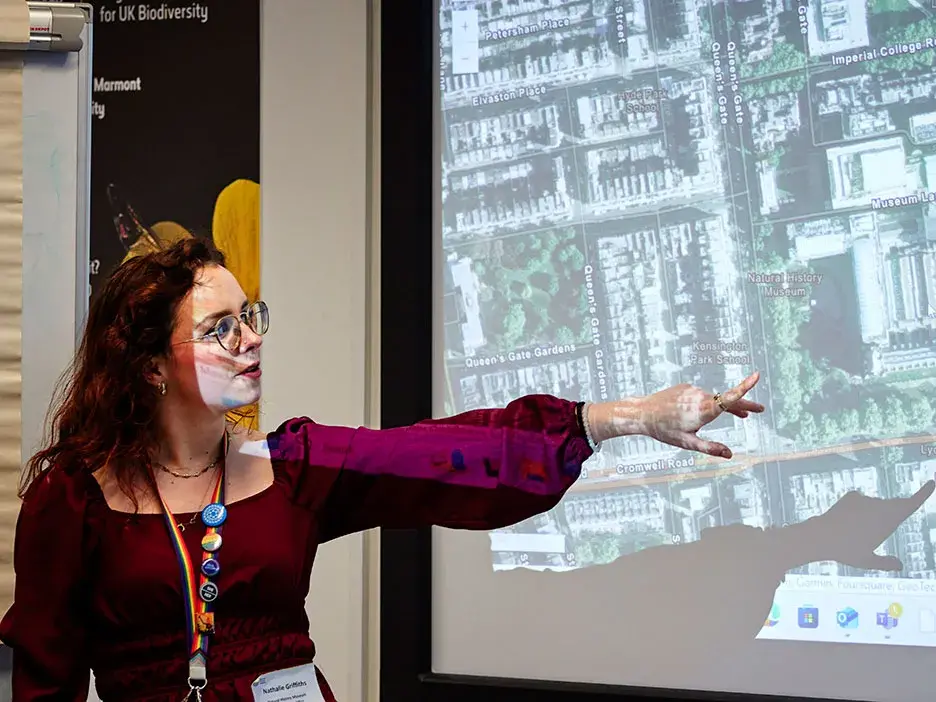Meet the team: Nathalie Griffiths

Nathalie Griffiths has recently joined the Nature Park programme as a Community Science Officer, based at the Natural History Museum. Here, she introduces her role in the programme and how she's been getting stuck in with schools mapping their site so far.
Hi everyone!
I've recently started as a Community Science Officer at the Natural History Museum working on the National Education Nature Park programme. I've previously worked with the Museum’s Visitor Experience team and as a science educator in my hometown of Boston, Massachusetts, so I'm very excited to continue developing my passion for sharing the wonder with children and young people about the natural world through this role! As Community Science Officer, my role is to help expand the Nature Park network across London, accelerating school engagement and data collection so that we can drive the process of enhancing biodiversity across the education estate. I was lucky enough to be able to visit two schools in my first week to watch how they engaged with the Nature Park process and greened the grey at their schools!
The first school I visited was Shacklewell Primary School in Dalston, where we worked with the Tree Council to facilitate a few different activities for the school's Science Club. We started with exploring the playground and mapping the different habitats found there, including flowerbeds, lines of trees and a bug hotel. Mapping your site is a really important first step in the Nature Park process, as it allows schools to understand their starting point, identify opportunities and track the changes they make. It also means that we can use the data they collect alongside all of the other schools, colleges and nurseries taking part to see the collective difference being made for nature through the Nature Park programme, which you can read more about here. It was amazing to see how enthusiastic the students were about identifying different microhabitats and brainstorming what biodiversity each one might support. After mapping the playground, the students broke off into two groups – Tree Officers and Tree Doctors – to learn about tree health using their playground as an example and plant some fruit trees on their site. I loved getting my hands dirty planting trees and chatting to the students about what changes they wanted to make to their school setting to make it greener (as well as saving some earthworms!), and I can't wait to see what positive impact their activities will have.
The next day, I travelled to West London to visit Villiers High School in Southall as part of a whole morning of school workshops centred around climate action and sustainability. We led two groups of Year 7 students through mapping almost their whole school site. I had a great time working with them in small groups to determine whether the grass behind their building qualified as a 'playing field or lawn' or 'meadow' using the Nature Park's worksheet and flow chart, and the students were eager to learn more about biodiversity and how they could support it at their school. The highlight of my day was one student in particular who knew all the different species of tree that lined the playing fields! We were also able to meet with the school gardener to discuss ideas for both greening their grey space and changing existing green areas to be more sustainable and enriching for the students. At the end of the day, the students were muddy and tired, but very enthusiastic about what they had accomplished, and I can't wait to see their habitat map on the Nature Park website!
Get started with mapping your site
Looking to get started with mapping your site? Head to the 'Mapping your site' page to get going on your Nature Park journey, and read all about the scientific research you are taking part in.
The Nature Park London team is supported by the Mayor of London.
